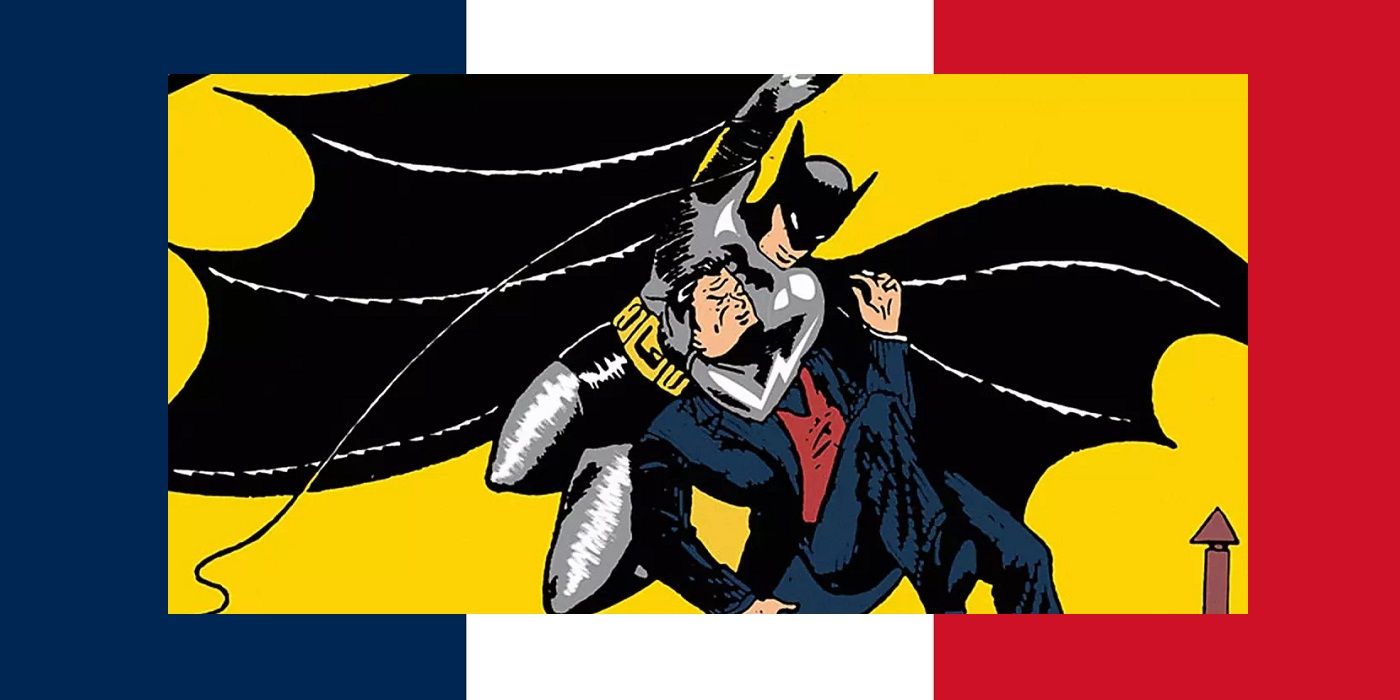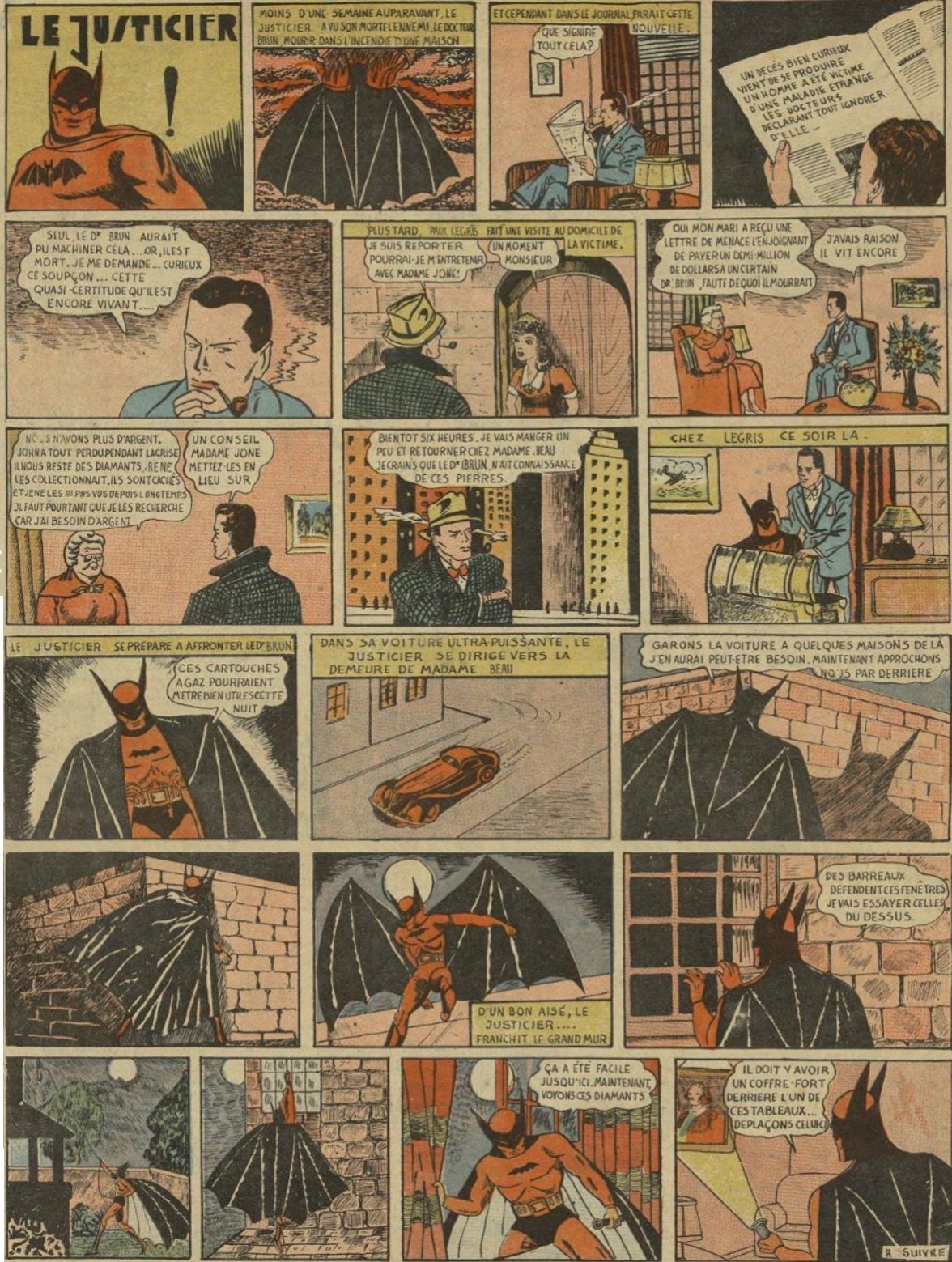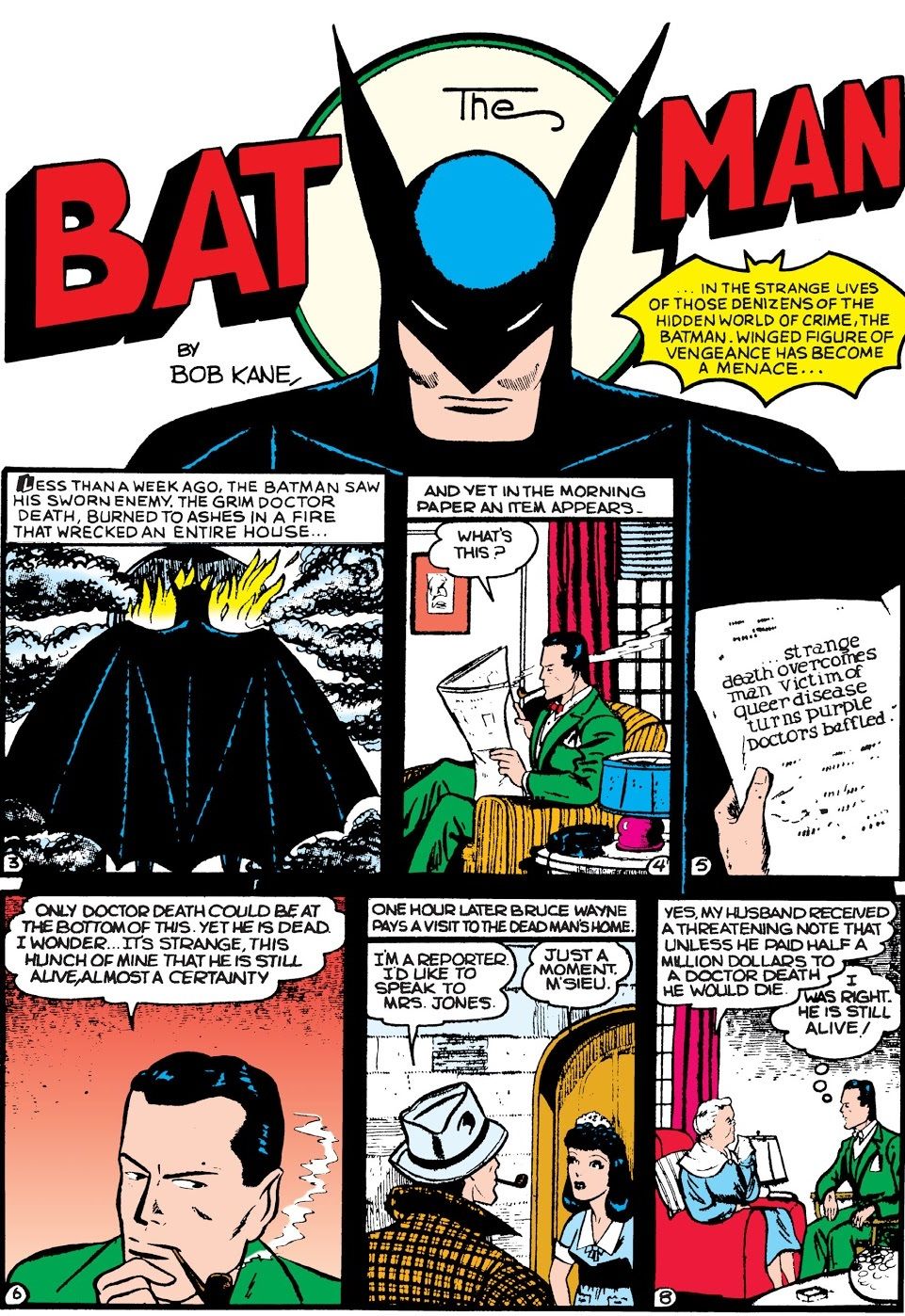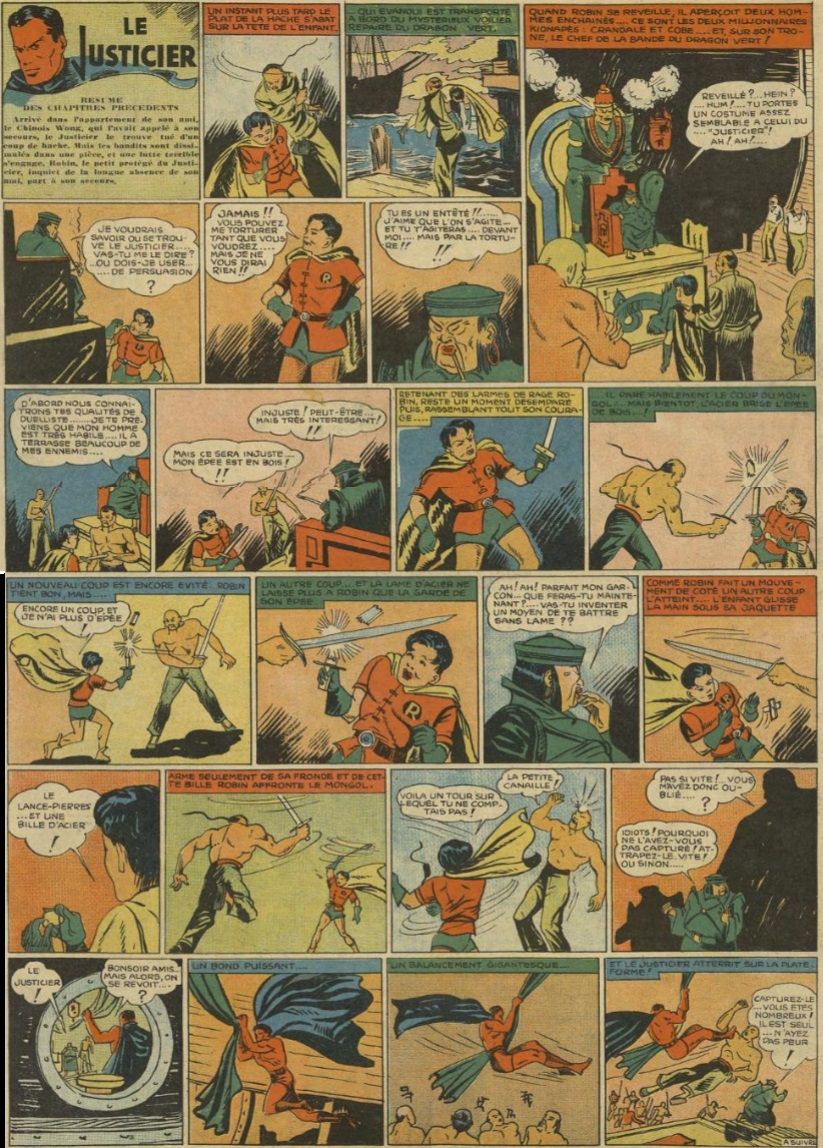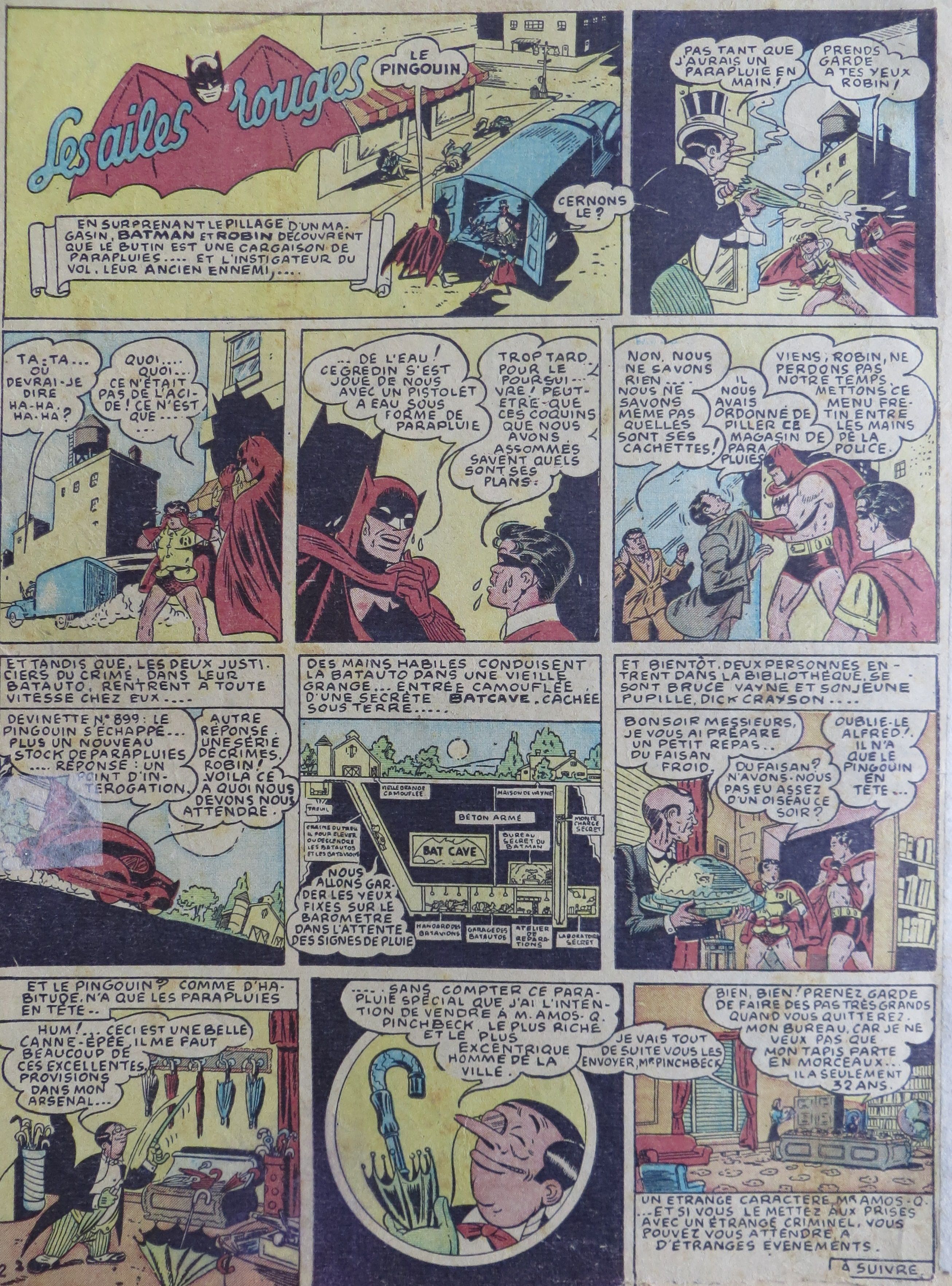Welcome to Comic Book Legends Revealed! This is the seven hundred and eighty-ninth installment where we examine three comic book legends and determine whether they are true or false.
As usual, there will be three posts, one for each of the three legends.
NOTE: If my Twitter page hits 5,000 followers, I'll do a bonus edition of Comic Book Legends Revealed that week. Great deal, right? So go follow my Twitter page, Brian_Cronin!
COMIC LEGEND:
French comics surreptitiously kept Batman comics going after the Nazis banned most American comics during World War II
STATUS:
True
Earlier this year, I wrote about how Superman handled Nazi Germany's ban on American comics during World War II, and now we turn our attention to how Batman was treated in France during the War (and after the war, before he was censored once again, for completely different reasons).
Even before the United States entered World War II, Nazi Germany had a contested relationship with American popular culture. In 1940, Jerry Siegel and Joe Shuster specifically did a comic book showing how Superman would end the war and Nazi Germany was NOT happy about it. It did not escape their notice that a couple of Jewish guys in the States were talking smack about Hitler. So when Germany quickly advanced into France in 1940, they halted the importation of almost all American comic characters (a few exceptions were made here and there).
Superman, naturally, was so popular that he had actually already started appearing in French comic magazines before the ban came about, but the interesting thing is that Batman did not actually make his comic book debut in France until AFTER Germany had invaded France and split into an occupied France and a "free" France (known as the "Vichy regime") that was obviously also still under German rule.
Batman was dubbed Le Justicier in his debut in late September/early October's Les Grandes Aventures...
As you might have noticed, this comic book story is clearly adapted from an actual Batman adventure from Detective Comics #30 (which came out about a year or so earlier), written by Gardner Fox and drawn by Bob Kane. Here is the interesting aspect of this, though. It was not literally a reprinting of Detective Comics #30 (honestly, with the Nazi ban on American comics, I don't know that an official reprinting would have even been possible). Instead, an unnamed French artist would actually just take the panels from Detective Comics #30 and re-draw them for Les Grandes Aventures. In fact, if you compare it to the original American comic...
You'll even notice that the panels are not even the same size. You see, Les Grandes Aventures was in a newspaper format, so it had wider panels, so the original art was not just copied but also altered to make the panels all wider. It's fascinating.
Another fascinating aspect of the adaptation, as you can tell, is that Batman's costume is colored red. Later, though, they took it a step further and also changed it even further, with the literal Batman aspect of the costume being dropped entirely, as we can see in this adaptation of Detective Comics #39 (by Bill Finger, Bob Kane and Jerry Robinson). Notice that Batman is drawn completely different and while Robin is drawn fairly similarly to his comic book appearance, he no longer uses a mask. Secret identities were not a thing in Le Justicier, apparently...
As you can see, things aren't quite as dramatic as the similar thing that was happening to Superman comics of the era, where new comics were being done with the Superman character, who looked COMPLETELY different (it makes sense, as Superman was obviously a much more popular figure at the time, even across the globe).
Once the war was over, you would imagine that France would have embraced American comic book characters and they did, in a big way, with Batman appearing in not one, but TWO different comic book magazines/newspapers. In September of 1946, the Tarzan comic book magazine featured a Batman feature in it and a year later, L'Astucieux followed suit with a Batman feature of their own. Once again, the character was ostensibly named someone else, but in the comic itself it is pretty evident that it is Batman...
The late 1940s, though, were an interesting period in France, as they were dealing with a lot of the same issues that the American comic book industry was dealing with, only with the added issue of these being FOREIGN imports. In other words, as the American comic book industry was starting to take fire from concerned citizens over the effects of comic books on young minds, can you even imagine what it would be like to have those same concerned citizens, only complaining about comics that were IMPORTED? It was not a good situation and by the end of the 1940s, France officially banned all American comic book imports, leading to an even more secure ban of Batman than the Nazi Germany one nearly a decade earlier.
But don't worry, Batman eventually made his way back to France and has been a constant presence in the country for a number of decades now. When I attended a Paris Comic Con a few years back, Batman was a major presence (actually, the exhibit I did at that Con even involved a bunch of Batman-related material).
Chris Gavaler did an in-depth look at the World War II era for Batman in France for the Hooded Utilitarian here. That's where some of the scans came from. Thanks to Chris on his excellent work.
SOME SPORTS LEGENDS!
Check out some other entertainment legends from Legends Revealed:
1. Did the Jamaican Bobsled Team Carry Their Sled to the Finish Line After a Crash?
2. Did the Governor of Colorado Lose Pikes Peak in a Football Bet?
3. Did Stefan Edberg Really Once Kill a Man With His Tennis Serve?
PART TWO SOON!
Check back later for part 2 of this installment's legends!
Feel free to send suggestions for future comic legends to me at either cronb01@aol.com or brianc@cbr.com

